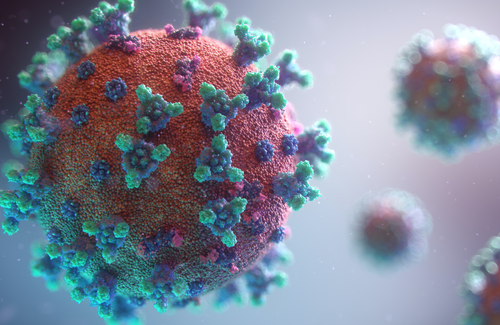
People with HIV in San Francisco were less likely to test positive for SARS-CoV-2 last year than people without HIV, but if they did, they had weaker antibody responses to the virus that causes COVID-19. Researchers at San Francisco General Hospital say that people with HIV should be followed up after vaccination to check antibody and T-cell responses.
The study findings are published in The Lancet HIV by Dr Matthew Spinelli and colleagues at the University of California San Francisco.
The study was designed to test whether people with HIV had been at higher risk of contracting SARS-CoV-2 and developing severe COVID-19 during the first wave of the pandemic in San Francisco in 2020, and to investigate whether infection resulted in weaker antibody responses in people with HIV, as seen in some other infections.
The study tested all people with HIV who attended the San Francisco General Hospital HIV outpatient clinic for SARS-CoV-2 antibodies as part of routine laboratory monitoring between 1 August and 31 October 2020. These samples were each matched with a blood sample taken on the same day from an adult of a similar age (within 5 years) attending the hospital.
The samples were tested for SARS-CoV-2 antibodies, as well as their ability to neutralise the virus and their avidity (a marker of time since infection).
Some people were tested more than once during the study period, so a total of 1138 samples from 955 people with HIV were tested, along with 1118 samples from 1062 people without HIV.
People with HIV were more likely to be male (81% vs 48%) and White (36% vs 13%) compared to the population without HIV, and less likely to have a history of type 2 diabetes (22% vs 54%) or cardiovascular disease (36% vs 57%) (all p < 0.001). People with HIV had a median CD4 count of 452, 11% had an unsuppressed viral load (> 200 copies/ml) and 16% were homeless. A quarter of people with HIV had a CD4 cell count below 249.
The prevalence of SARS-CoV-2 antibodies was twice as high in people without HIV than in people with HIV (7.4% vs 3.7%). The odds of infection were 50% lower in people with HIV (odds ratio 0.50, 95% confidence interval 0.30-0.88, p = 0.008) after adjusting for age, sex or ethnicity).
People of Latinx ethnicity had six times the risk of testing positive for SARS-CoV-2 compared to White people, regardless of HIV status (OR 6.33, 95% CI 2.83-14.21, p = 0.0001), and among people with HIV, people of Latinx ethnicity had four times the risk of testing positive compared with White people (OR 4.33, 95% CI 1.33-14.04). Other ethnic groups did not have a higher risk of testing positive and low CD4 count (< 200), unsuppressed viral load or homelessness did not affect the risk of testing positive among people with HIV.
The study investigators say that the lower positivity rate in people with HIV may be a consequence of greater caution on the part of people with HIV due to higher perceived susceptibility, as well as compliance with stay-at-home orders.
Five cases of severe COVID-19 occurred in people with HIV and two in people without HIV. Three of the five cases of severe COVID-19 in people with HIV were in people with CD4 counts below 200.
People with HIV had lower antibody concentrations (42% lower, 95% CI -16% to -59%). There was also a trend towards lower antibody concentrations in people with CD4 counts below 200, although this result wasn’t statistically significant.
"The study cannot show whether antibody responses after vaccination are weaker in people with HIV."
When the ability of antibodies to stop the virus binding to the human ACE-2 receptor was measured (neutralisation), antibodies from people with HIV were less efficient (53% lower neutralising titre). Antibody concentrations and neutralising titres were correlated, meaning that people with higher antibody concentrations showed greater reductions in virus binding to its human target receptor. There was no difference in avidity between people with and without HIV, suggesting no difference in the time since infection. Antibody concentration were not correlated with avidity, suggesting that antibody concentrations were not affected by the time since infection.
In an accompanying comment article, Belgian researchers say the findings show that people with HIV might be at higher risk of reinfection. However, the level of neutralising antibodies needed for protection against infection is unknown.
The study does not compare antibody responses after natural infection to responses after vaccination and cannot show whether antibody responses after vaccination are weaker in people with HIV.
Two separate studies, carried out in the United Kingdom and South Africa, show that antibody responses are equivalent in people with and without HIV, suggesting that the San Francisco findings are more relevant to unvaccinated people who have recovered from COVID-19.
Spinelli M et al. SARS-Cov-2 seroprevalence, and IgG concentration and pseudovirus neutralising antibody titres after infection, compared by HIV status: a matched case-control observational study. Lancet HIV, published online 29 April 2021.
DOI: https://doi.org/10.1016/S2352-3018(21)00072-2
Dauby N, Martin C. SARS-CoV-2 immunity and HIV infection: total recall? Lancet HIV, published online 29 April 2021.

